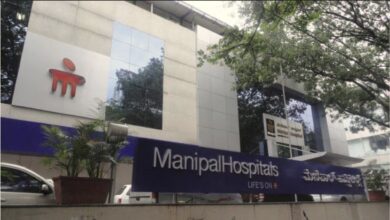How Brazilians Are Eradicating Favelas From Their Country?
“Tears come from the heart and not from the brain”. The tears of the Brazilian slum have made the entire world witness their agony.
A Brazilian slum is called a favela. The name originated during war-times, as soldiers during Brazil’s civil war took temporary refuge, residing in hills filled with favela plants. Rocinha is the largest favela in Brazil. Rocinha is built on a steep hilly surface. There are as many as 1000 favelas in Brazil. A favela typically comes into being when a large crowd occupies a vacant piece of land at the edge of a city and constructs houses with scrap and stolen material.
The history of the slums of Brazil came into light during the final years of the nineteenth century, as Brazil transformed from an empire to a republic nation. As the country continued to undergo substantial political and economic changes, the size and number of slums multiplied. The favelas of Brazil garnered political attention in the 1940s. Ever since, the Brazilian government has been gradually taking steps to clear the slums and provide the people with public houses and safe lifestyles. However, the slums in Brazil had grown in number tremendously between the 1950s and 1980s.

Despite the fact that Brazil has the ninth largest economy in the world by nominal Gross Domestic Product (GDP) and the eighth largest economy by purchasing power parity, a large population of the country still lives the favela way.
Highlights:
- The Summer Olympic Games 2016 was held in Rio de Janeiro, Brazil. While the majority of the media focused on the main events of the Games, some media outlets were concerned about the country’s slums. After this stunt, the Brazilian slums became more renown worldwide.
- Slum clearance and resettlement has become an important task for the Brazilian government in the past few years.
- According to the census released in December 2011,Brazilian Institute of Geography and Statistics (IBGE) has stated that nearly 6 percent of Brazil’s population lives in slums. This is mainly due to the low income and extremely high cost of living in Rio de Janeiro and other parts of Brazil.
- ‘The Future Begins at Home’ is a project by a private organization in Recife, Brazil that allows 250 families access to healthier spaces for work, play, and family life. This is their small part towards slum clearance in Brazil.
- The life expectancy in Brazil is approximately 68 years while the life expectancy of individuals living in the Brazilian slum is estimated to be a lowly 48 years. The government is trying to provide modern, sanitary, public housing units to the people from favelas at a faster pace.
Why is a large population of Brazil Living in Favelas?
“Six million Brazilian families are homeless or living in precarious housing,” said Maria Luisa Mendonca, a professor at University of Rio de Janeiro, who studies land conflicts.
The slums in Brazil grew swiftly as the migrant population increased. Since proper housing was too expensive for many migrants, they turned to poverty and lived at the outskirts of Brazil’s major cities, such as Rio de Janeiro, São Paulo, and Recife. Eventually, migrants had no place to go and thereby settle in the slums.
More than fifty million Brazilians are living in inadequate conditions as a result of the high cost of living in Brazil. Of these people, most are families that have an income of approximately $300 per month. These poor wages also lead to an increase in the number of slums in Brazil, along with unequal wealth distribution in the country.

Crisis in Favelas:
- The typical favela has poorly planned infrastructure, which makes electricity supply and plumbing work problematic.
- Poor living conditions in the favelas often breeds crime. Drug trafficking gangs, with most members being young male teenagers, are seen in the favelas. The cocaine trade has largely affected Brazil and its favelas. According to the Rio media, drug sales in some of the favelas may fetch a handful of money – up to 150 million USD per month. This huge earning in the favela attracts young minds to this business. Police Pacification Units were introduced in 2008 in the favelas and are slowly reducing the crime rates in the favelas.
- There have been frequent shootouts between the criminal gangs and police which leads to severe losses of life. So, during the 2016 Summer Olympics in Rio, the state government was forced to employ numerous police pacification units (UPPs) to keep the criminals of the favela in control.
- Health risk is a major crisis in the favelas because of overcrowding, pollution, improper sewage systems, and a lack of waste disposal systems. So, there is a high chance of diseases being developed and spread in the favelas.
- Access to clean drinking water is another problem prevailing in these Brazilian slums. People living in favelas have to walk over two hours each day to get clean drinking water.
Despite these poor conditions, life in favelas is beginning to improve.
Eventual Slum Upgrades and Slum Clearance:
The Brazilian government is working hard to help Brazilian cities fix up their slums. The government has made all possible arrangements to raise concrete houses for all the families living in the slum. As an initiative of slum clearance activity, temporary housing was arranged for the displaced favela residents until the government could erect permanent houses for them. Few slums of the Brazilian cities are being upgraded with good facilities, such as access to clean water, proper waste management, and building renewal. Private organisations and social welfare associations are also funding the upgrades of slums in Brazil. NGOs, such as ‘Community in Action’, are focusing on sustainable community development within these Brazilian slums. Though governments have made multiple attempts for slum clearance, some of the favela dwellers refuse to move.
The original slums were constructed from debris and stolen materials such as stone, steel, and wood scraps. With the available funds, improvements were made and the homes are now solidified with brick, cinder blocks, and sheet metal. However, according to the World Bank, the homes were claimed to be inadequate for living conditions.
New technologies are gradually being made possible to many houses in the favela, such as television and the Internet. In addition to that, small businesses are also making progress within their communities and most recently in the area of tourism as well.The housing program ‘Minha Casa Minha Vida’ (“My Home, My Life”) was initiated by the Brazilian federal government was launched in March 2009 with a budget of 18 billion USD to build one million houses. These cheap houses provided a chance for the poor to own a house. These houses also made it possible for some of the people in slums to move here by buying a house at an affordable cost. However, this housing project has been criticized for its placement and quality of the houses.
“Although progress is well underway, the Brazilian government must take more secure action to ensure that conditions within these Brazilian slums improve further.” was the statement claimed by Genevieve T. DeLorenzo, a journalist at ‘The Borgen Project’, New York.
Peace for Slum Dwellers!
Clearing slums is the need of an hour when people’s lives are at risk, by moving inhabitants to a safe location as soon as possible. The major problem with the slum dwellers is that they refuse to elsewhere listing reasons like work, health, responsibilities, and social ties. This thought from the slum dwellers must vanish for their start of new life in a new place. Slum dwellers must believe that peaceful life is waiting outside the slums, and must step out for their well-being and peace.




